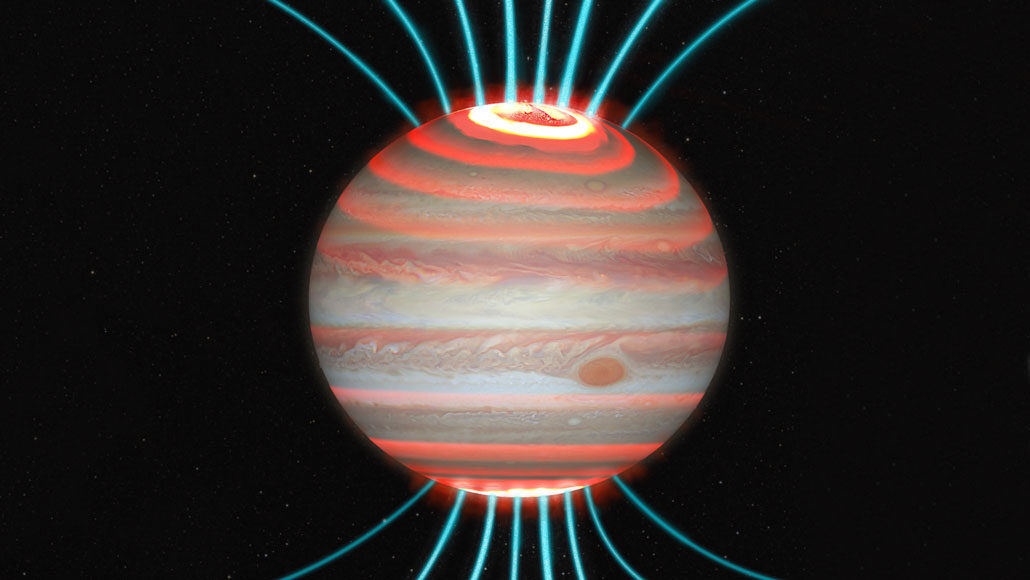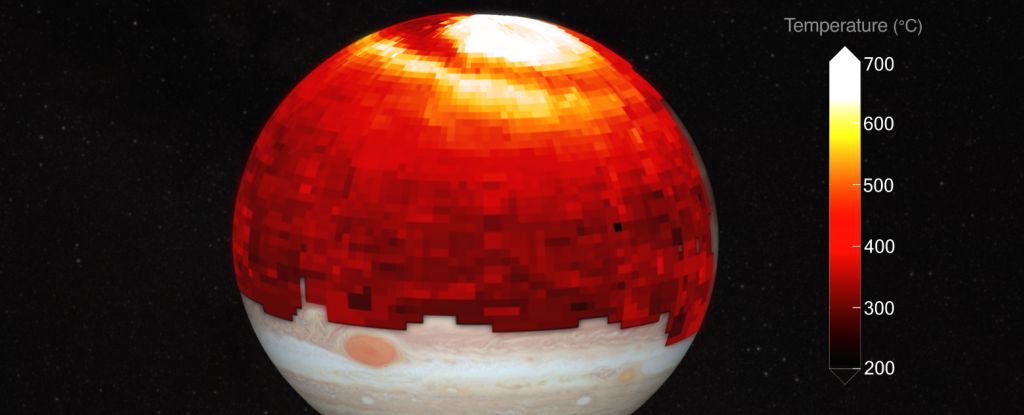A heat wave with a temperature of 700 degrees Celsius and several times the size of the Earth was observed in the atmosphere of Jupiter. According to scientists, it was caused by auroras.

Heat wave on Jupiter
Last year, scientists from the Japan Aerospace Exploration Agency compiled a heat map of Jupiter’s atmosphere. Directly while observing it, they noticed that a heat wave was spreading in its atmosphere from the north pole to the equator.
It had a colossal scale. The diameter of the heat spot was 130 thousand km, which is about ten times the diameter of the Earth. The temperature in it rose to 700 degrees Celsius, and the wave was moving at a speed of 2400 m/s.
Scientists were able to establish that the heat wave was closely related to the auroras at the poles of Jupiter. Directly in front of it, a stream of intense radiation from a solar flare entered the atmosphere of a giant planet.
Mystery of the planet’s heat
Observing the wave of energy on Jupiter allowed us to solve the mystery surrounding it since the 50s of the 20th century. Then it was discovered that the atmosphere of the giant planet had a temperature of 420 degrees Celsius, while the Sun could only warm it up to -73.
Where the rest of the energy came from was unclear, although in recent years scientists have become increasingly convinced that its source could be auroras. They occur when charged particles are guided by magnetic field lines and crash into the planet’s atmosphere, transferring energy to it.

Jupiter has very powerful auroras, which, unlike the Earth, are constantly present on it. However, most of the radiation does not occur in the visible range, so we learned about them relatively recently.
Most of them are responsible for the flow of particles ejected by volcanoes on the moon of the planet Io. They form a torus around Jupiter, which constantly settles on the planet and causes auroras warming up the atmosphere.
However, new research suggests that it is not only the moon spewing sulfur dioxide that is responsible for heating the atmosphere of the gas giant. The sun, from which the planet is five times farther away than the Earth, still contributes to its warming up.
According to www.sciencealert.com
Follow us on Twitter to get the most interesting space news in time
https://twitter.com/ust_magazine

